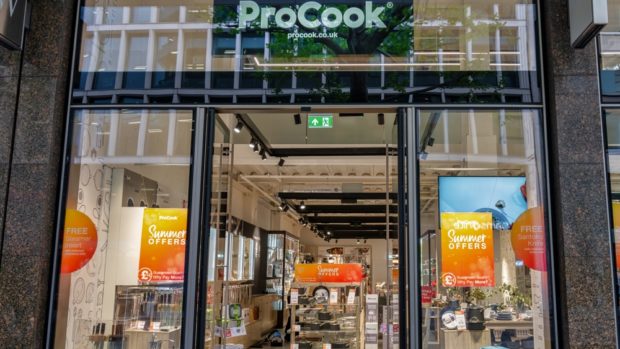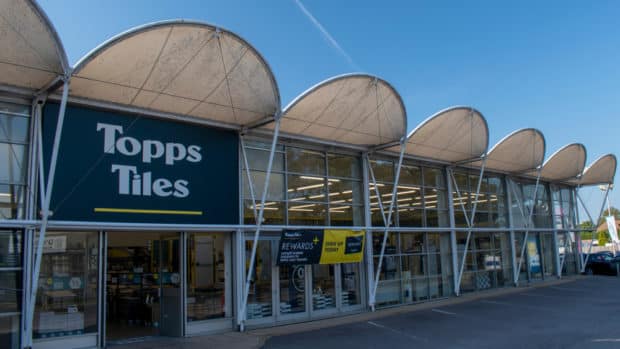Direct sellers have a wealth of data at their disposal. They know
the name and address of their customers, the types of products
bought, how often someone buys, and how much an individual spends
on an average order. Further profiling can reveal the customer’s
age, whether he has children, and what other hobbies and
interests he has. With so much information available, it’s no
wonder that many merchants choose to extend their ranges to
target a specific segment of their database.
“Range extensions can address lifestyle or lifestage
changes among core customers, attempting to ‘grow’ with them and
attract more of their spend,” says retail and mail order
consultant Stella Hartley. “Or they can be designed to
attract a different customer altogether.”
Take for instance The Hut Group, the online retailer operating
TheHut.com, Zavvi.com and MyBag.co.uk, as well as a
“behind-the-scenes” provider of online retail
services to partners such as Asda, Argos and Tesco. It identified
the health and beauty category as a key market and has been
selling female-focused cosmetics and beauty products on its
general merchandise site for some time. In June 2010, it
announced it was breaking into the male-grooming market with the
launch of Washbag.com. Among its USPs is free shipping on all
orders.
Men are also the target at Net-a-Porter.com. Ten years after it
was founded, luxury-apparel etailer Net-a-Porter said it was
launching a menswear site called Mr Porter. The new site, set to
go live in January 2011, will offer a selection of global
designer labels as well as niche specialist brands alongside
Net-a-Porter’s editorial content and style advice. Net-a-Porter
founder Natalie Massenet said in a statement that Net-a-Porter
was always going to be a women’s brand, but that for some time
now a dedicated men’s offering had been in the pipeline.
“We have a ready-made customer base for our men’s
business,” she explains. “One hundred percent of
Net-a-Porter customers have a man in their lives in some capacity
and 59 percent of them are married or living with their
partners.” Further, Net-a-Porter aims to attract new, male
users, to its site.
BrightMinds, a cataloguer of educational toys and games, is
another business expanding its product range with the creation of
the Baby BrightMinds catalogue. Alison Quill, managing director,
says that she picked best-sellers for the new mailer, “we
had the idea to segment
-

Online Subscription
From: £19.00 + VAT / month Select options This product has multiple variants. The options may be chosen on the product page
BrightMinds as these development stages need a bit more
focus”. The first mailing is scheduled for early July, with
Quill using list swaps and data pools to supplement the
housefile. “Plus, as this is recruiting at a totally
different age of child, we are looking at inserts and of course
social stuff online,” she adds.
In the above examples, the logic behind range expansion is clear
to see. In the case of Net-a-Porter and BrightMinds in
particular, the two have spent a considerable amount of time
building a brand profile and have become trusted in their niche.
For The Hut, this is a natural progression in its aggressive
expansion plans that will see it strengthen its presence in a
range of sectors including health and beauty, sports, footwear,
fashion, and toys.
According to Andrew Wilson of the Catalogue Consultancy,
succeeding in launching a spin-off title that targets another
segment of the database will reap great rewards, “the value
of the company will be enhanced by having a stable of catalogues
or income streams rather than just the one.”
Doing it for the kids
On 16th June, Scottish cashmere cataloguer Brora sent a customer
email heralding the launch of its new children and baby catalogue
this autumn. Brora already includes childrenswear in its main
offering, so this launch will test whether it can make this
segment work on its own steam. “Fashion brands with a clear
image and identity can extend into childrenswear if they
understand the dynamics of the marketplace and can position a
children’s offer without adversely affecting their adult
range,” says Stella Hartley. One company that has done this
well, she notes, is The White Company with its Little White
Company catalogue that “remains true to the principles of
the parent brand by offering beautifully designed, principally
white products for children”. In short, producing
“specialogues” to appeal to a specfic set of
customers can work, so long as brands “target those
customers effectively and really understand from their data or
market research that the product offer is relevant,” she
says.
For Andrew Wilson, Brora is an interesting case. “With a
short range of clothing for children they are evidently
successful, or they wouldn’t be looking to expand the range.
However, are there enough people willing to pay £129 for a
child’s jumper that may get destroyed in an afternoon at the
park?”
Hartley is more confident in the Brora extension, “as long
as they can identify the customers to whom a childrenswear offer
would be appealing and the range is of a style and quality that
enhances rather than diminishes the image of the parent brand
then, it will be a success.”
Out of range
This strategy isn’t for every business. Shirt retailer/cataloguer
Charles Tyrwhitt discontinued its short-lived childrenswear range
in 2007. Tiny Tyrwhitt never performed as expected because the
majority of Tyrwhitt’s customers are men, and not the primary
buyers of children’s clothing. “No successful mail order
company is short of opportunities,” says Andrew Wilson of
the Catalogue Consultancy. “They have a responsive
housefile, mail order core skills and the ability to manage a
customer relationship,” all of which are good groundwork
for a range extension. But not every company can do it.
He highlights the financial as well as human resources needed to
meet the demands of a new venture. Businesses should also
consider “what are they going to have to give up doing in
their main business in order to feed the new baby? New things are
always more interesting, but would their time be better spent on
core business?”
Wilson says that if a company believes it can succeed with a
range extension, and that the extra time and effort are worth it,
it should go for it. But, he adds, “if you are going to do
it, mean it.”








Share